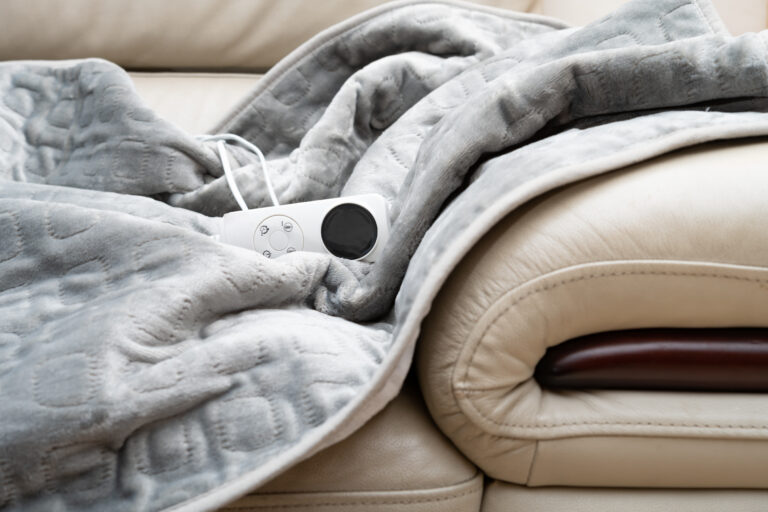There’s nothing quite like hopping into a warm bed with a cup of tea. With electric blankets, preheating your bed has never been easier. Modern electric blankets, like heating pads, use an insulated wire controlled by a remote attached to the blanket. As long as you follow the manufacturer’s instructions, they’re generally pretty safe. They’re also subject to safety regulations governed by the Australian Competition and Consumer Commission (ACCC).
The risk with electric blankets comes when they’re misused, worn out, or damaged and can cause fires, burns, electric shock and power disruptions.
Check the ACCC’s website for a list of electric blankets that have been recalled. If the model you own is on the list, pull the plug and stop using it, since it's no longer safe to use. If it's still within the warranty date, return it to the store you bought it from for a refund or exchange.
If you’re in the market for a new electric blanket, search for blankets with AS/NZS 60335.2.17:2012, the international standard for electric blanket regulations.
Perform regular checks. Energy Safe Victoria recommends checking your electric blanket at least once a year to keep yourself safe. Place it flat on your bed, and turn it on for about five minutes. Run your hands over the blanket and feel around and feel for any hotspots, creases, kinks, or protruding wires beneath the blanket.
Check the switch for cracking, discolouration, or heat marks, and ensure the remote, cord, and controller plugs are in good working order. Over the warmer months, when you’re not using them, the wires can degenerate, so it’s important to give your blanket a quick once over before you start using it again!
Keep it off while you’re asleep. Fire Rescue Victoria emphasises the importance of ensuring your electric blanket is off while you’re asleep. While it can be tempting to keep the warmth going all night long, it’s important to reduce the likelihood of a fire and keep yourself and your family safe.
Do not use an electric blanket on your child or baby’s bed. If your child has an electric blanket on their bed, make sure you take all necessary precautions. They’re generally safe for kids over bed-wetting age, but if your little one is prone to having an accident, we’d recommend waiting until they’re a bit older.
Do not put an electric blanket on your baby’s bed. All your bub needs for a cosy night’s sleep is a cot and mattress that meets Australian standards, and some warm pajamas or a swaddle. Your baby shouldn’t use an electric blanket, as it can cause dehydration and burns, even at low temperatures.
To stay safe while using an electric blanket, it's important that you:
- Never use an electric blanket with an extension cord
- Don't store your electric blanket under heavy items as this can damage the wires.
- Always obey the manufacturer’s instructions
- Use it as an under blanket unless the instructions state it’s safe to use as an over blanket
- Refrain from using an electric blanket if you’re sensitive to heat or cannot turn the blanket off when uncomfortable
- Never use an electric blanket on a water bed
- Never wash or dry clean an electric blanket unless the manufacturer's instructions specify it can be washed
- Never fold an electric blanket. Just keep it on your bed unplugged, or carefully roll it up and store it without other items on top.
- At the beginning of winter, before you start using them again, test them for damage.
- If your electric blanket is over ten years old, replace it with a new one.
